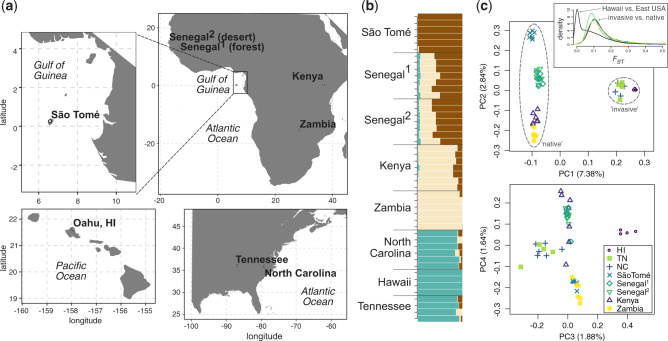Fig. 1.
Collection locations across sub-Saharan Africa, eastern North America, and Hawaii (a) and genetic differentiation among Zaprionus indianus samples (b and c). (a) All collection locations are highlighted with bold type. Zaprionus indianus was sampled from all locations, Z. tuberculatus was sampled from São Tomé and Senegal (forest site), Z. africanus from São Tomé and Kenya, and Z. inermis, Z. tsacasi, Z. taronus, and Z. nigranus from São Tomé. Invasive populations of Z. indianus are differentiated from populations in their native range (b and c), with the strongest genetic differentiation between invasive and native populations (c; PC1) and among African populations (c; PC2). Invasive populations in the eastern United States and Hawaii also show weak differentiation (c; PC3). The inset in the top right of (c) shows the genome-wide distribution of differentiation (FST; 5-kb genomic windows) between invasive Z. indianus and each of the four African populations (Senegal sample locations grouped as one population), and also between eastern United States and Hawaiian samples (black line).

